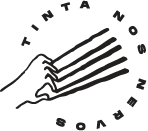José Miguel Gervásio
“A mãe foi ao leite e não voltou”
Apresentação
Neste pequeno conjunto de desenhos, pelo menos dois assuntos se perfilam. Um, dominado pelo sentido da série, que como uma espécie de ensaio exprime uma estrutura e a leitura possível do todo. O outro, assente na montagem, permite construir narrativas que confluem para a validação do projecto, ultrapassando o quadro na dimensão original do seu silêncio, a alegoria enquanto paradigma estético. Espécie de tema, este da alegoria. Um falso tema a que a produção de quadros não pretende de facto obedecer e que pertencerá antes à categoria da pintura de contornos históricos, que antecede o quadro finalizado e a montagem, pois a série implica um diálogo vivo com a história das imagens pintadas. No entanto, a série aproxima-se deste sentido por desmembramento, aparição fantasmagórica ou espectral das imagens, pretendendo afirmar-se num dos mais prolíficos debates sobre a arte do século XX e que implicou o desaparecimento do próprio objecto de arte, substituindo-o pela palavra, pelo signo, pela alternativa significante imaterial, abrindo passagem para que o nada se tornasse em ser, em suma, em tema da arte. Perante a análise, a essência da arte confunde-se com o que lhe é essencial. Aquilo que têm em comum os desenhos e a pequena pintura da exposição com a súmula da questão é o facto de os desenhos e a pequena pintura pertencerem, como um iminente caso de pretensão fenomenológica, ao fim do mundo da arte. A série é uma experiência subjectiva que faz oscilar a produção da pintura através de um conjunto de fases que só aparentemente terminam na montagem e na exposição. Em qualquer dos casos, denota-se um vínculo de sentido expressionado na linguagem da série, mas que não ultrapassa a intencionalidade do autor, que é o mesmo que dizer que se trata de uma experiência de alguém cultivado num determinado tempo, mas que pretende levar em linha de conta a historicidade da sua experiência, assim como a do objecto através do qual se manifesta essa experiência. E no entanto, creio que nada disto serve para explicar a arte que se faz, ou para produzir arte, a não ser para, muito diligentemente, transformar em norma de transitividade aquilo que é puramente pessoal. Por isso, esta insistência em desenhar e pintar, particularizando uma universalidade que é, apenas e só, a unidade do quadro projectada no que queremos ver. Toda esta série é um corpo orgânico, que implica fortemente a imaginação do observador.
Leia sobre o artista aqui.
Voltar
José Miguel Gervásio
“The mother went to the milk and didn’t come back”
Overview
In this small set of drawings, at least two subjects stand out. One, dominated by the meaning of the series, which as a kind of essay expresses a structure and the possible reading of the whole. The other, based on editing, allows the construction of narratives that converge to validate the project, surpassing the painting in the original dimension of its silence, the allegory as an aesthetic paradigm. A kind of theme, this one from the allegory. A false theme that the production of paintings does not actually intend to comply with and that will rather belong to the category of painting with historical contours, which precedes the finished painting and editing, as the series implies a lively dialogue with the history of the painted images. However, the series approaches this meaning through dismemberment, the ghostly or spectral appearance of the images, intending to assert itself in one of the most prolific debates on 20th century art and which entailed the disappearance of the art object itself, replacing it with word, through the sign, through the immaterial significant alternative, opening the way for nothing to become a being, in short, a theme of art. In the face of analysis, the essence of art is confused with what is essential to it. What the drawings and the small painting in the exhibition have in common with the summary of the issue is the fact that the drawings and the small painting belong, as an imminent case of phenomenological pretension, to the end of the art world. The series is a subjective experience that oscillates the production of painting through a set of phases that only apparently end in assembly and exhibition. In either case, there is a link of meaning expressed in the language of the series, but which does not go beyond the author's intentionality, which is the same as saying that it is an experience of someone cultivated at a certain time, but who intends to take into account the historicity of their experience, as well as that of the object through which this experience is manifested. And yet, I believe that none of this serves to explain the art that is made, or to produce art, except to, very diligently, transform what is purely personal into a norm of transitivity. Therefore, this insistence on drawing and painting, particularizing a universality that is, solely and exclusively, the unity of the painting projected onto what we want to see. This entire series is an organic body, which strongly involves the imagination of the observer.
Read about the artist here.
Back

